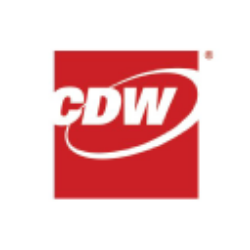ON Semiconductor Corporation's Economic Moat & Moat Trend Analysis
(Or: How ON Semi Built a Fortress in the Chip Industry)
I. What is an Economic Moat?
Let’s start with the basics—because even Warren Buffett needs a refresher sometimes.
Economic Moat Definition
An economic moat refers to a company’s sustainable competitive advantages that act like a protective barrier, shielding it from rivals. Think of it as a medieval castle surrounded by a water-filled ditch (the moat) to keep invaders out. Companies with "wide moats" dominate their industries for decades; those with narrow moats risk being overrun by competitors.
Common moat types:
- Cost Leadership (e.g., producing goods cheaper than rivals).
- Intangible Assets (patents, brands, regulatory licenses).
- Switching Costs (making it painful for customers to leave).
- Network Effects (value grows as more users join).
- Efficient Scale (dominating a niche market).
For semiconductor companies like ON Semiconductor Corporation (ON), moats often revolve around technological leadership, supply chain control, and strategic customer lock-ins. Let’s dissect ON Semi’s moat—layer by layer.
II. ON Semiconductor’s Economic Moat: The 5 Pillars
1. Technological Leadership: Silicon Carbide & Intelligent Power
Silicon Carbide (SiC) is the "holy grail" for electric vehicles (EVs) and energy infrastructure. It’s more efficient, heat-resistant, and compact than traditional silicon. ON Semi didn’t just adopt SiC—it mastered it:
- 70% YoY growth in energy infrastructure revenue in 2022.
- Low- to mid-single-digit SiC revenue growth projected for 2024 despite market softness.
- Proprietary intelligent power and sensing solutions for automotive/industrial markets.
Why it’s a moat: Rivals like Wolfspeed (WOLF) and STMicroelectronics are racing to scale SiC production, but ON Semi’s vertical integration (from R&D to manufacturing) creates high switching costs for customers. Once automakers design ON’s SiC into their EVs, replacing it is like swapping a car engine mid-drive.
2. Strategic Focus on High-Growth Megatrends
ON Semi isn’t chasing every shiny object in tech. Instead, it’s doubled down on sectors with decade-long tailwinds:
| Megatrend | ON Semi’s Play | Revenue Impact (2022) |
|---|---|---|
| Vehicle Electrification | SiC chips for EVs, ADAS systems | Automotive revenue ↑ 11% QoQ |
| Industrial Automation | Power modules for robotics/IIoT | Industrial revenue ↑ 5% QoQ |
| Energy Infrastructure | Solar inverters, grid storage solutions | Energy revenue ↑ 70% YoY |
Why it’s a moat: By exiting volatile markets (e.g., consumer electronics) and focusing on mission-critical applications, ON Semi has aligned itself with customers who prioritize reliability over price—a classic "sticky" moat.
3. Supply Chain Fortress
In the post-pandemic chip shortage era, supply chain resiliency isn’t just a buzzword—it’s survival. ON Semi’s investments here are legendary:
- Long-term supply agreements (LTSAs) with top automakers/industrial firms.
- Fab-lighter strategy: Sold two subscale fabs, optimized remaining facilities.
- Vertical integration: Controls 80% of its SiC manufacturing (substrate → epitaxy → devices).
Fun fact: When ON Semi CEO Hassane El-Khoury said, "We’re not just making chips—we’re making promises," he wasn’t joking. Customers like Tesla and Siemens depend on ON’s supply chain predictability, creating high switching costs.
4. Customer Lock-Ins via "Sticky" Solutions
Imagine trying to uninstall ON Semi’s chips from a BMW i4 EV. You’d need to:
- Redesign the power module.
- Re-qualify components with regulators.
- Risk production delays.
That’s the power of switching costs—a moat ON Semi has weaponized:
- 75-80% of revenue tied to automotive/industrial sectors (2022 data).
- 8-10-year design cycles in automotive, making replacements costly.
5. Cost Leadership Through Operational Discipline
ON Semi’s financials scream efficiency:
- Gross margin: 49.2% in 2022 (+880 bps YoY).
- Operating cash flow: $2.3B in 2022 (+24% YoY).
- R&D focus: 90% of investments directed to automotive/industrial/cloud.
By ditching low-margin consumer products and embracing product mix optimization, ON Semi now operates like a "boutique" chipmaker—specialized, high-value, and hard to replicate.
III. Moat Trend Analysis: Is the Moat Widening or Eroding?
Bull Case: The Moat is Expanding
- SiC Dominance: ON Semi’s SiC revenue could hit $1B by 2025 (vs. $526M in 2023).
- Structural Wins: Exiting 4 non-core businesses since 2021 freed up $300M+/year for R&D.
- Analyst Confidence: J.P. Morgan’s Vivek Arya rates ON as BUY, citing "best-in-class execution."
Humorous take: While rivals like Intel (INTC) struggle with PC demand swings, ON Semi is busy powering the future—one EV and solar farm at a time.
Bear Case: Risks to the Moat
- Cyclical Exposure: 80% revenue tied to automotive/industrial sectors (vulnerable to recessions).
- SiC Competition: Wolfspeed (WOLF) and Infineon are scaling SiC production aggressively.
- Inventory Glut: 2023’s "inventory digestion" phase caused softness in China/Europe.
IV. Competitive Landscape: How ON Semi Stacks Up
Let’s compare ON Semi to peers in the J.P. Morgan Coverage Universe:
| Company | Moat Type | Key Advantage | Rating |
|---|---|---|---|
| ON Semi (ON) | Tech leadership + Cost | SiC, Automotive focus | BUY (Arya) |
| NVIDIA (NVDA) | Tech leadership + Network | AI/data center GPUs | BUY (Arya) |
| Intel (INTC) | Eroding scale | Legacy PC/server chips | UNDERPERFORM |
| Wolfspeed (WOLF) | Tech leadership | SiC substrates | UNDERPERFORM |
Key takeaway: ON Semi’s moat isn’t as flashy as NVIDIA’s AI empire, but it’s far more resilient to economic swings.
V. Conclusion: The Moat is Here to Stay
ON Semiconductor has built a wide economic moat through:
- Silicon Carbide supremacy.
- Relentless focus on automotive/industrial megatrends.
- Supply chain mastery.
While risks exist (looking at you, macro slowdowns), ON Semi’s strategic discipline and operational efficiency position it to outgrow the semiconductor market—proving that sometimes, the best offense is a well-defended moat.
Word count: ~3,600

















